

September 12 – 18: “Have you created characters with moral ambiguity?”
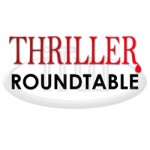 Have you created characters with moral ambiguity? This week ITW members Paul McGoran, Arlene Kay, Shannon Baker, Judy Penz Sheluk, Michael J. Martinez, Ian Truman, Ann Parker, Wendy Walker and Charles Salzberg discuss writing characters with moral ambiguity and how difficult are they to make believable?
Have you created characters with moral ambiguity? This week ITW members Paul McGoran, Arlene Kay, Shannon Baker, Judy Penz Sheluk, Michael J. Martinez, Ian Truman, Ann Parker, Wendy Walker and Charles Salzberg discuss writing characters with moral ambiguity and how difficult are they to make believable?
~~~~~
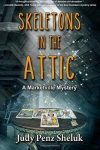 Judy Penz Sheluk’s debut mystery novel, The Hanged Man’s Noose, the first in the Glass Dolphin Mystery series, was published in July 2015 by Barking Rain Press. Skeletons in the Attic, Judy’s second novel, and the first in her Marketville Mystery series, will be published in August 2016 by Imajin Books. Judy’s short crime fiction appears in World Enough and Crime (Carrick Publishing), The Whole She-Bang 2 (Toronto Sisters in Crime), Flash and Bang (Untreed Reads) and Live Free or Tri: a collection of three short mystery stories. She is also the author of Unhappy Endings: a collection of three flash fiction stories. In her less mysterious pursuits, Judy works as a freelance writer; her articles have appeared regularly in dozens of U.S. and Canadian consumer and trade publications. In addition to ITW, Judy is also a member of Sisters in Crime International, Sisters in Crime – Guppies, Sisters in Crime – Toronto, Crime Writers of Canada, and the Short Mystery Fiction Society. She lives in Alliston, Ontario, Canada, with her husband, Mike, and their golden retriever, Leroy Jethro “Gibbs”.
Judy Penz Sheluk’s debut mystery novel, The Hanged Man’s Noose, the first in the Glass Dolphin Mystery series, was published in July 2015 by Barking Rain Press. Skeletons in the Attic, Judy’s second novel, and the first in her Marketville Mystery series, will be published in August 2016 by Imajin Books. Judy’s short crime fiction appears in World Enough and Crime (Carrick Publishing), The Whole She-Bang 2 (Toronto Sisters in Crime), Flash and Bang (Untreed Reads) and Live Free or Tri: a collection of three short mystery stories. She is also the author of Unhappy Endings: a collection of three flash fiction stories. In her less mysterious pursuits, Judy works as a freelance writer; her articles have appeared regularly in dozens of U.S. and Canadian consumer and trade publications. In addition to ITW, Judy is also a member of Sisters in Crime International, Sisters in Crime – Guppies, Sisters in Crime – Toronto, Crime Writers of Canada, and the Short Mystery Fiction Society. She lives in Alliston, Ontario, Canada, with her husband, Mike, and their golden retriever, Leroy Jethro “Gibbs”.
 Wendy Walker is a family law attorney in Connecticut. Prior to her legal career, she worked as a financial analyst at Goldman, Sachs. All Is Not Forgotten is her first psychological thriller. Wendy is currently writing her second thriller and managing a busy household of teenage boys.
Wendy Walker is a family law attorney in Connecticut. Prior to her legal career, she worked as a financial analyst at Goldman, Sachs. All Is Not Forgotten is her first psychological thriller. Wendy is currently writing her second thriller and managing a busy household of teenage boys.
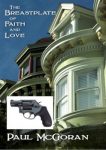 Before turning to crime fiction, Paul McGoran had a varied career as Navy linguist, marketing executive, management consultant and day trader. His first published novel was the pulp thriller, Made for Murder (New Pulp Press, 2015). He is also the author of a collection of short noir fiction, Paying for Pain. Paul writes fiction because it is most immersive activity he has ever known. His next novel will bring his P.I. protagonist back to his old hometown to solve the revenge murder of the bully who terrorized his childhood.
Before turning to crime fiction, Paul McGoran had a varied career as Navy linguist, marketing executive, management consultant and day trader. His first published novel was the pulp thriller, Made for Murder (New Pulp Press, 2015). He is also the author of a collection of short noir fiction, Paying for Pain. Paul writes fiction because it is most immersive activity he has ever known. His next novel will bring his P.I. protagonist back to his old hometown to solve the revenge murder of the bully who terrorized his childhood.
 Ann Parker earned degrees in Physics and English Literature at the University of California, Berkeley, before falling into a career as a science/corporate writer. During the daylight hours, she scribbles about “bleeding-edge” research for a scientific R&D institution and enterprise business solutions for legal firms. At night, she delves into the past. Her award-winning Silver Rush historical series, published by Poisoned Pen Press, is set in the 1880s silver boomtown of Leadville, Colorado, and features Silver Queen Saloon owner Inez Stannert–a woman with a mysterious past, a complicated present, and an uncertain future. The series was picked as a “Booksellers Favorite” by the Mountains and Plains Independent Booksellers Association. She is a member of the National Association of Science Writers, International Thriller Writers, Historical Novel Society, Mystery Writers of America, Sisters in Crime, Women Writing the West, and Western Writers of America (and probably a few other organizations that have slipped her mind at the moment). Ann and her family reside in the San Francisco Bay Area, whence they have weathered numerous boom-and-bust cycles.
Ann Parker earned degrees in Physics and English Literature at the University of California, Berkeley, before falling into a career as a science/corporate writer. During the daylight hours, she scribbles about “bleeding-edge” research for a scientific R&D institution and enterprise business solutions for legal firms. At night, she delves into the past. Her award-winning Silver Rush historical series, published by Poisoned Pen Press, is set in the 1880s silver boomtown of Leadville, Colorado, and features Silver Queen Saloon owner Inez Stannert–a woman with a mysterious past, a complicated present, and an uncertain future. The series was picked as a “Booksellers Favorite” by the Mountains and Plains Independent Booksellers Association. She is a member of the National Association of Science Writers, International Thriller Writers, Historical Novel Society, Mystery Writers of America, Sisters in Crime, Women Writing the West, and Western Writers of America (and probably a few other organizations that have slipped her mind at the moment). Ann and her family reside in the San Francisco Bay Area, whence they have weathered numerous boom-and-bust cycles.
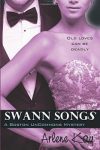 Arlene Kay spent twenty years as a Senior Executive with the Federal Government where she was known as a most unconventional public servant. Experience in offices around the nation allowed her to observe both human and corporate foibles and rejoice in unintentional humor.
Arlene Kay spent twenty years as a Senior Executive with the Federal Government where she was known as a most unconventional public servant. Experience in offices around the nation allowed her to observe both human and corporate foibles and rejoice in unintentional humor.
 Ian Truman is a novelist, a musician and a visual artist. Born and raised in the East End of Montreal, he is a fan of punk, hardcore, hip hop, dirty realism, noir, satire and hopes to mix these genres in all of his works. A graduate of Concordia University’s creative writing program, he won the 2013 Expozine Awards for best Independent English Novel. He lives in Montreal with his wife and two daughters.
Ian Truman is a novelist, a musician and a visual artist. Born and raised in the East End of Montreal, he is a fan of punk, hardcore, hip hop, dirty realism, noir, satire and hopes to mix these genres in all of his works. A graduate of Concordia University’s creative writing program, he won the 2013 Expozine Awards for best Independent English Novel. He lives in Montreal with his wife and two daughters.
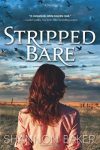 Shannon Baker writes the Kate Fox mystery series (Tor/Forge). Stripped Bare, the first in the series, features a sheriff in rural Nebraska and has been called Longmire meets The Good Wife. Baker also writes the Nora Abbott Mystery Series (Midnight Ink), a fast-paced mix of murder, environmental issues and Hopi Indians published by Midnight Ink. Baker was voted Rocky Mountain Fiction Writers’ 2104 Writer of the Year. She writes from the Colorado Rockies to the Nebraska Sandhills, the peaks of Flagstaff and the deserts of Tucson.
Shannon Baker writes the Kate Fox mystery series (Tor/Forge). Stripped Bare, the first in the series, features a sheriff in rural Nebraska and has been called Longmire meets The Good Wife. Baker also writes the Nora Abbott Mystery Series (Midnight Ink), a fast-paced mix of murder, environmental issues and Hopi Indians published by Midnight Ink. Baker was voted Rocky Mountain Fiction Writers’ 2104 Writer of the Year. She writes from the Colorado Rockies to the Nebraska Sandhills, the peaks of Flagstaff and the deserts of Tucson.
 Michael J. Martinez is a critically acclaimed author of historical fantasy and genre-blending fiction, including the Daedalus trilogy of Napoleonic-era space opera novels and the new MAJESTIC-12 series from Night Shade Books. He lives in New Jersey with his wife, daughter, two cats, and several chickens.
Michael J. Martinez is a critically acclaimed author of historical fantasy and genre-blending fiction, including the Daedalus trilogy of Napoleonic-era space opera novels and the new MAJESTIC-12 series from Night Shade Books. He lives in New Jersey with his wife, daughter, two cats, and several chickens.
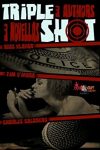 Charles Salzberg is the author of the Shamus Award nominated Swann’s Last Song, and two others in the series, Swann Dives In, and Swann’s Lake of Despair, which was a finalist for 2 Silver Falchions, the Beverly Hills Book Award, and the Indie Excellence Award. The next in the series, Swann’s Way Out, will be published in early 2017. He is also the author of Devil in the Hole, which was named one of the best crime novels of 2013 by Suspense magazine, and more than two dozen nonfiction books. He teaches writing in New York City at the New York Writers Workshop, where he is a Founding Member.
Charles Salzberg is the author of the Shamus Award nominated Swann’s Last Song, and two others in the series, Swann Dives In, and Swann’s Lake of Despair, which was a finalist for 2 Silver Falchions, the Beverly Hills Book Award, and the Indie Excellence Award. The next in the series, Swann’s Way Out, will be published in early 2017. He is also the author of Devil in the Hole, which was named one of the best crime novels of 2013 by Suspense magazine, and more than two dozen nonfiction books. He teaches writing in New York City at the New York Writers Workshop, where he is a Founding Member.
- LAST GIRL MISSING with K.L. Murphy - July 25, 2024
- CHILD OF DUST with Yigal Zur - July 25, 2024
- THE RAVENWOOD CONSPIRACY with Michael Siverling - July 19, 2024
